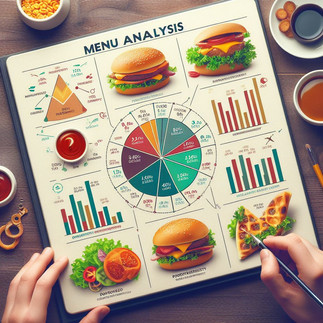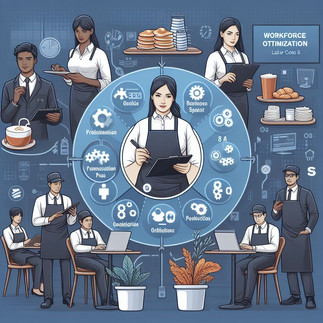Restaurant owners must thoroughly mange cost to optimize profits . Running a successful restaurant involves more than just serving delicious food and providing excellent service. Lets explore strategies that can help restaurants optimize their costs without compromising on quality.
1. Menu Analysis
Restaurant owners must create framework to evaluate and optimize menu pricing and design to create a more profitable menu and business overall. By focusing on high-margin items and eliminating or reimagining low-margin ones, establishments can increase overall profitability.
2. Stock control
Effective inventory management is crucial for controlling costs in a restaurant. Overstocking can lead to waste and increased holding costs, while understocking may result in shortages and rush-order expenses. Implementing a reliable inventory tracking system, setting par levels, and working closely with suppliers can help strike the right balance.
Regularly review and update your menu based on seasonal availability and market fluctuations. Negotiate with suppliers for bulk discounts and build strong relationships to secure better deals. By managing inventory efficiently, restaurants can minimize waste and reduce overall expenses.
3. Workforce / Labor optimization
Labor costs often represent a significant portion of a restaurant's expenses. Optimizing staff schedules based on peak hours and leveraging technology for efficient workforce management can help control labor costs. Cross-train employees to perform multiple roles, allowing for flexibility in staffing and reducing the need for overtime.
Consider implementing performance-based incentives to motivate staff and improve productivity. Regularly review labor costs as a percentage of revenue and adjust staffing levels accordingly to align with business demand.
4. Technology Absorption
Stay ahead with innovative restaurant technology trends. Transform your business and exceed expectations. Incorporating technology into restaurant operations can lead to significant cost savings. Point-of-sale (POS) systems, online ordering platforms, and reservation systems can streamline processes, enhance efficiency, and reduce manual errors.
Explore options such as inventory management software, employee scheduling apps, and customer relationship management (CRM) tools to streamline operations and cut unnecessary expenses.
5. Energy efficacy
Reducing your restaurants overall energy consumption not only lower your utility cost , its also better for the environment. Implementing energy-efficient practices, such as using LED lighting, upgrading kitchen equipment, and properly maintaining HVAC systems, can lead to substantial savings over time. Educate staff on energy conservation practices and make it a part of your overall sustainability efforts.
Conclusion
Successfully maximizing costs in a restaurant requires a holistic approach that considers various aspects of operations. From menu engineering and inventory management to labor optimization and technology integration, every facet plays a crucial role in achieving sustainable profitability. By carefully analyzing and implementing these strategies, restaurant owners can strike a balance between delivering exceptional dining experiences and running a financially sound business.































Comentários